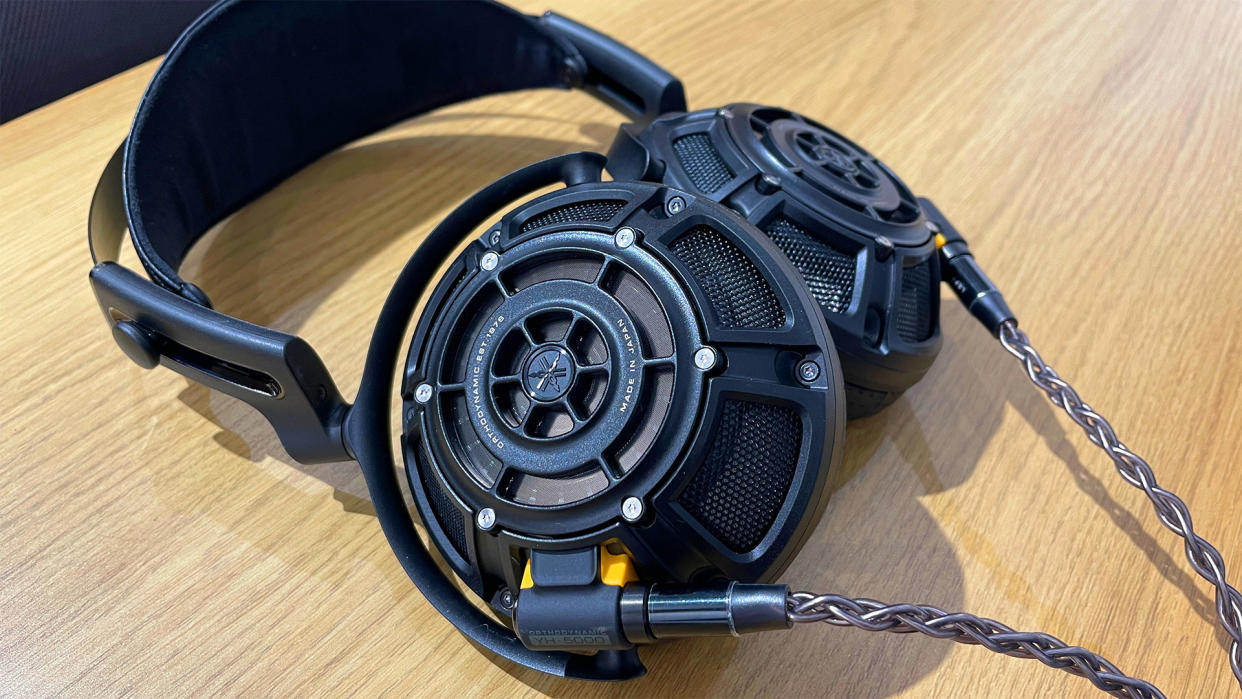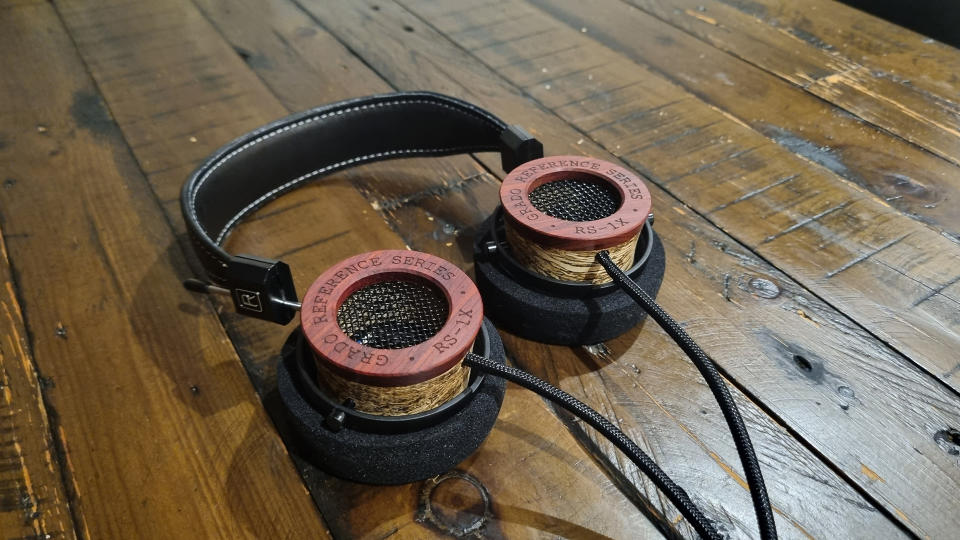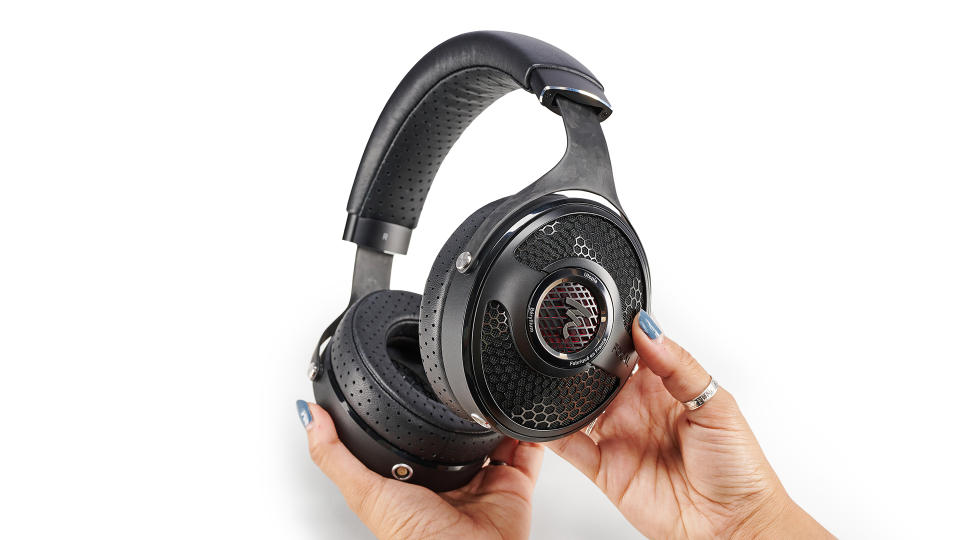An ode to open-back headphones – and why I'd never go (closed-)back

Something struck me the other day, as I sat at my desk navigating my laptop mouse awkwardly around several pairs of over-ear headphones that I can’t bring myself to stow away, despite only one being able to plug into my DAC and sit on my head at any given time: all but one pair (a wireless pair) were open-backs.
Just briefly for the uninitiated, the headphones to which I am colloquially referring are those with ‘open-back’ designs. That is, over-ears that a) don’t have enclosures behind their drivers, and b) do have perforated or otherwise unsealed earcups that leak (some) sound both in and out. Essentially, sound from those ‘free’ drivers is fired both towards and away from your ears – as opposed to just towards them as is the case in your more commonplace ‘closed-back’ design, where sound is predominantly enclosed between your ears and the earcups. Consequently, open-backs are wired and intended for home use… unless you're the illogical albeit brilliant Grado GW100x.
When I think about it, it’s no coincidence that open-backs make up 100 per cent of my home headphones stash; I have heard, tested and lived with more pairs of both types than I would care to hazard a guess at over the years, and downright prefer them to their closed-back companions. And at any budget too, from entry-level Koss and Grado pairs to high-end Grados, Focals and Beyerdynamics. While closed-backs certainly have their advantages – which I will go into shortly and which is ultimately why the majority of headphone manufacturers produce more models of that type – open-backs are my personal preference. And if you haven’t put a pair into action before, they could – you never know – be yours too. Here’s why.

Less fatiguing, more comfortable
I’m someone who listens to music casually for a good portion of the daily 9 to 5, and ‘properly’ for typically one or two albums at a time. As I’m sure many of you will agree, listening to music through headphones can be tiring – it’s a direct, intimate assault on your ears no matter the volume you are listening at – just as watching something on a screen two inches from your face would be even with the brightness turned down. But, in my experience, open-back designs aren’t nearly as fatiguing; this makes sense when you consider they allow air pressure to flow outwards as well as into (and building up around) your ears. Physically, they are less direct. While I often need a break after an hour or so with closed-backs, I can comfortably go several hours straight with open designs.
Speaking of comfort, open-back headphones tend to chalk up a point here too. It isn’t a hard and fast rule, but they do generally tend to be lighter than closed-back models, due to the absence of a driver enclosure. And less weight equals less pressure on the crown of your head.
Again, the greater airflow in open-back designs means they are typically more breathable and less likely to be an oven for your ears over longer listening sessions – though admittedly a headphones’ earpad material and clamp force are going to play a big part here too. If headphones have leather earpads, for example, warm lugs are inevitable.
Clearer, more expressive sound
The best open-backs are typically clearer and more dynamically expressive than the best closed-backs; physics can explain why. Where, with open-back designs, most of the driver’s rearward sound is allowed to escape out of the enclosure, with closed-backs it is trapped inside and can detrimentally affect sound quality in three ways. First, the sound bouncing around can excite resonances in the enclosure, causing unwanted noise (or distortion); second, it can find its way back to the drive unit diaphragm and add to its output; and third, that trapped air can cause inertia against the driver and restrict the movement of its diaphragm during big excursions, negatively affecting dynamics.
That inherent spaciousness or ‘airiness’ tends to deliver a wider sonic canvas with better instrument separation that sounds less ‘in your head’ too – more comparable to that you get from loudspeakers.
Closed-backs reply with generally greater punch and solidity, especially in the lower (and lower-mid) frequencies – that sealed air resonating does them one favour at least! I’m not necessarily someone who enjoys ample bass – probably due to my fondness for indie, folk and ambient electronic music. To some degree, that's probably also why I generally prefer standmount speakers to floorstanders – though I’d be lying if I said I haven’t craved greater low-end punch from open-backs before.

But they aren’t for everyone
This flag-flying for open-back headphones should be caveated by the fact that they may be great for me but they won’t be for everyone. I have the luxury of quiet when listening – no commutes, no kids, barely any disruption at all save for the lawn-mower visit every Tuesday. My music-listening world is very open-back friendly. While it isn’t the case for me, I have heard some people say that they actually like being able to hear a little bit of their surroundings, so they don’t feel completely off their home’s audio grid.
But if you value alone time with your music library and your listening environment is in any way noisy, I’m afraid open-backs will not work for you. Remember, they bleed sound in as much as they bleed sound out. Closed-backs inherently offer an isolated and more intimate experience.
If your preferred music genre is hip-hop or EDM, for example, you may well side with a punchier, more muscular, bass-heavy sound. And if you’re after only one pair of headphones to cover home and on-the-go listening (I for one couldn’t live without a pair of wireless noise-cancelling over-ears that are naturally closed-back), again you will require the practicality of closed-backs.
If you, like me, can accommodate open-back headphones in your music-listening world and prioritise clarity and transparency above all other sonic traits, I promise you will be utterly won over.
MORE:
How to choose the right pair of headphones
Closed-back vs open-back headphones: which one is best for you?

